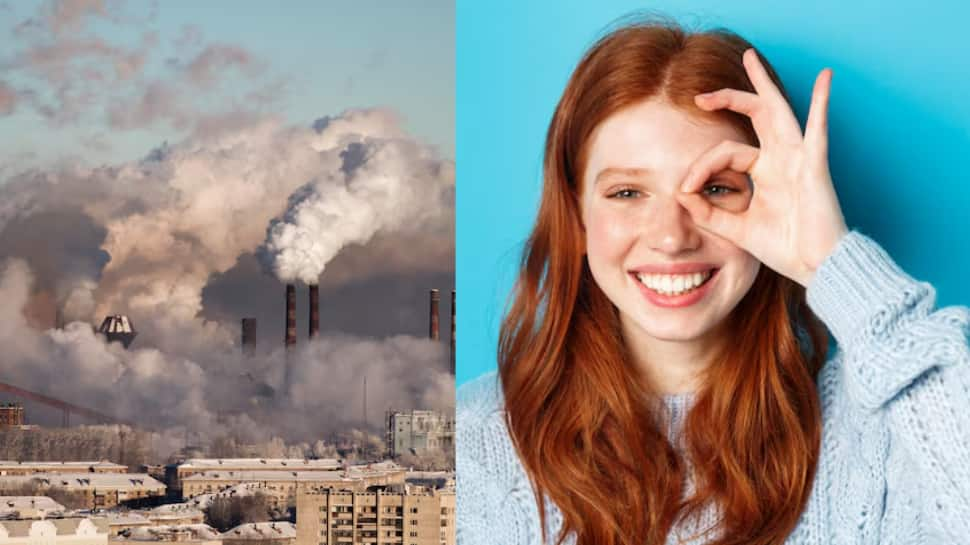Health authorities are witnessing a spike in patients with eye-related complications. This is primarily due to the augmenting levels of temperatures as well as pollution. The combination of toxic air and heat during summer months are particularly damaging the vision of many individuals.
Heatwaves Along with Strong Dry Dusty Winds
Dr Priyanka Singh (MBBS, MS, DNB, FAICO), Consultant & Eye Surgeon, Neytra Eye Centre, New Delhi says, “Apart from the rising temperatures, heatwaves accompanied by strong dry and dusty winds are adding to the problem. These winds carry fine particles, dust, and allergens that further irritate the eyes, leading to more cases of dryness, allergic reactions, and infections. Individuals exposed to such harsh conditions, especially those working outdoors, are at greater risk.”
Pollution: A Threat That Goes Unnoticed
Dr Priyanka says pollution is a slow threat that is incredibly dangerous. Air pollution, particularly in urban areas, is packed with harmful particles like PM2.5, nitrogen dioxide, and numerous other chemical irritants are progressively present in city air. This directly results in the eyes burning, getting inflamed and itching. Continuous living in highly contaminated regions is connected with dry eye syndrome too. This is a condition in which individuals experience little to no tears which leads to discomfort chronic blurred eyesight.
Heat waves and Their Effects on Vision
“Not only can extreme heat dehydrate the body, but the eyes can also suffer from dehydration. Hot and dry air poses serious danger to the eyes for long periods of time, especially for people who work outdoors or spend prolonged hours in climate controlled rooms,” explains Dr Priyanka. Heat also tends to worsen eye allergies that flare during high temperatures in combination with pollen and dust particles.
Dr Priyanka says an eye condition that is not very popular but known to occur from extreme heat is photokeratitis, caused by overexposure to ultraviolet (UV) light. Symptoms may include severe pain, reduced vision, and hypersensitivity to light, which can last for some time but can get painful for a considerable length of time.
Eye Problems That Pollution and Heatwaves May Cause
Due to rising pollution levels and heatwaves, several specific eye conditions are becoming increasingly common, including:
1. Allergic Conjunctivitis
2. Infectious Conjunctivitis (especially viral)
3. Episcleritis (Irritation and inflammation of the episclera)
These conditions can cause symptoms like redness, swelling, watering, itching, and discomfort, often requiring prompt medical attention.
Protective eyewear is essential for prevention of these symptoms to manifest and goes a long way in preserving optimal vision. The spectacles should possess proper covering for the sides to entirely lock any rays from getting through them. Additionally, contact lens wearers with pre-existing conditions such as hypertension and elderly patients are more at risk than the broader population, whilst patients who work outdoors and take public transport regularly are more likely to become susceptible.
Safety Tips And Precautions to Protect Your Eyes During Pollution and Heatwaves
1. Always Wear UV-Protective Sunglasses
Invest in high-quality sunglasses that block 99% to 100% of UVA and UVB rays.
Wrap-around styles offer additional protection against dust and airborne particles.
2. Use Protective Goggles in High-Pollution Areas
When pollution levels are high, wear protective eyewear if you’re spending extended time outdoors.
Special anti-pollution glasses can help shield your eyes from irritants.
3. Stay Hydrated
Heatwaves cause dehydration, which can lead to dry eyes.
Drink plenty of water (at least 8-10 glasses daily) to maintain natural eye moisture.
4. Avoid Rubbing Your Eyes
Pollutants and dust particles settle on your skin and eyelashes.
Rubbing your eyes can introduce irritants deeper and cause infections or allergies.
5. Use Artificial Tears or Lubricating Eye Drops
Keep your eyes moist, especially during hot, dry, and polluted conditions.
Choose preservative-free eye drops recommended by an ophthalmologist.
6. Limit Outdoor Activities During Peak Pollution and Heat Hours
Avoid going out between 11 AM and 4 PM when pollution and heat stress are at their worst.
If unavoidable, minimize exposure by staying in shaded areas.
7. Maintain Eye Hygiene
Wash your face and eyelids gently after coming indoors to remove pollutants.
Avoid using harsh soaps around the eye area.
8. Use Cold Compresses
If your eyes feel irritated or swollen after exposure, apply a cold compress to soothe inflammation.
9. Keep Air Purifiers Indoors
Install air purifiers at home to reduce indoor air pollutants, which can also affect your eye health.
10. Regular Eye Check-Ups
Visit your eye doctor at least once a year, or more often if you experience redness, itching, blurred vision, or excessive tearing.
Why Is It Important?
Polluted air contains harmful chemicals, particulate matter, and allergens that can irritate the eyes, causing redness, itching, dryness, and even serious conditions like conjunctivitis or allergic keratitis. Meanwhile, heatwaves contribute to faster tear evaporation, dehydration, and increased sensitivity to light—all of which can deteriorate your eye health over time.
If symptoms persist such as redness, ongoing irritation, blurriness of vision, or discomfort in the eyes, continues it is advisable to consult an ophthalmologist. Timely diagnosis and treatment can prevent minor irritations from turning into serious complications.
Pollution and heatwaves may not be entirely avoidable, but their impact on your eyes can often be minimized with simple precautions. If in doubt, always consult an eye specialist.











More Stories
5 Live News Specials
Urgent care worse than pre-pandemic, think tank says
Shocking Truth: Are Extreme Diets Slowing Down Your Weight Loss? | Health News